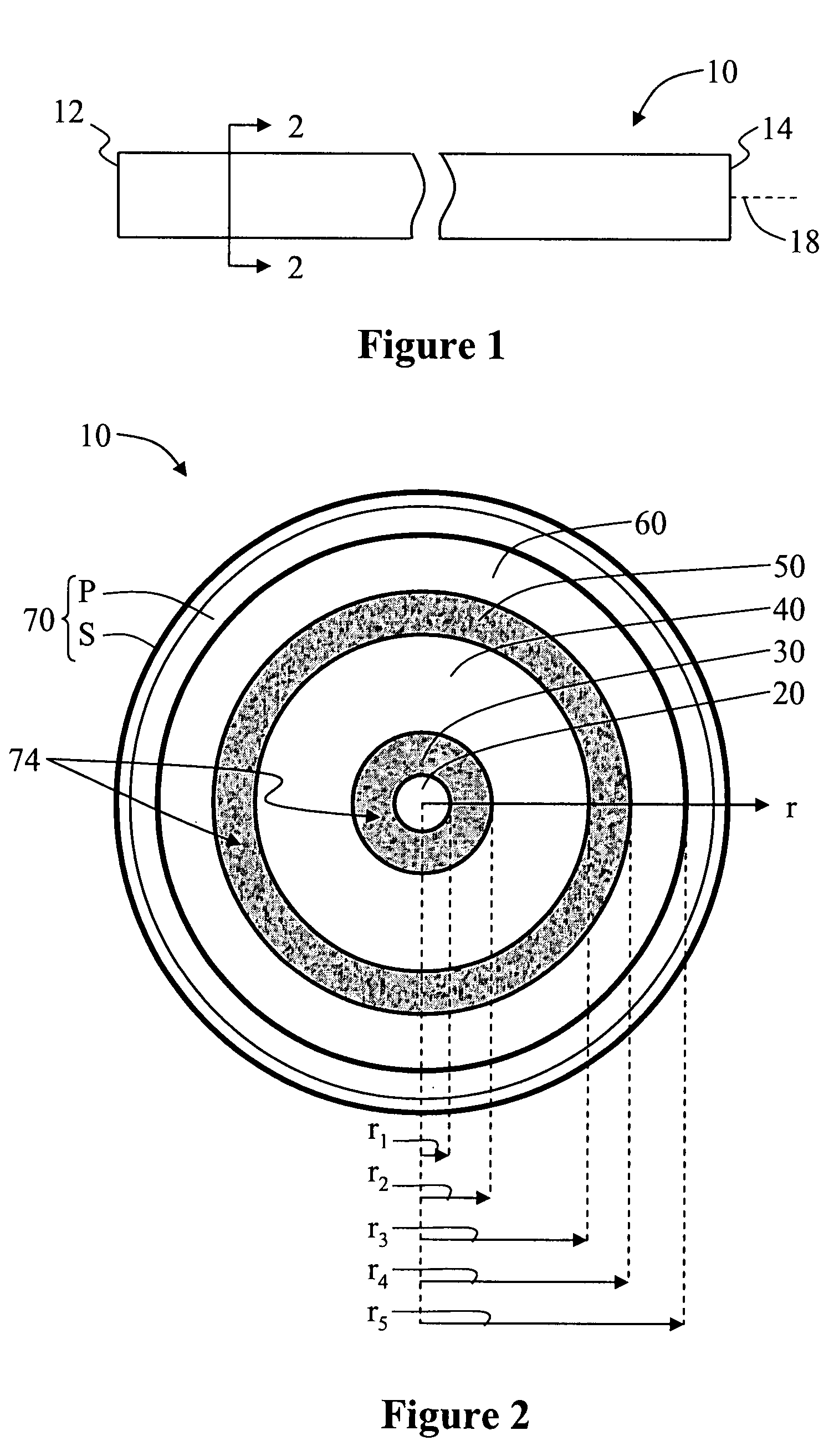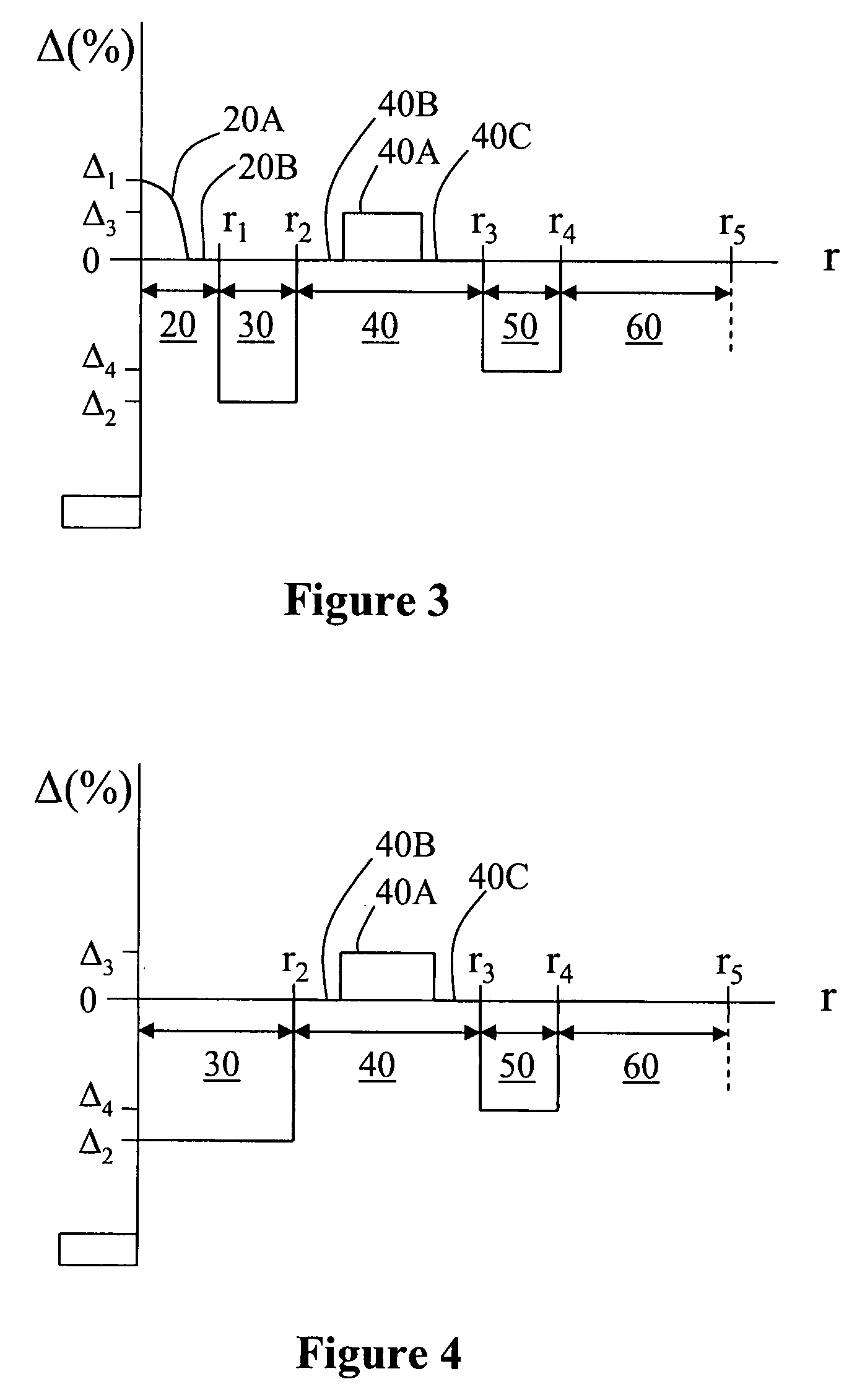Optical fiber for optical power transmission
a technology of optical fiber and optical power transmission, applied in the field of optical fiber, can solve problems such as the problem of powering electrical devices (including electronic devices) using copper wires, and achieve the effects of avoiding damage, high optical power level, and less prone to light-induced damag
- Summary
- Abstract
- Description
- Claims
- Application Information
AI Technical Summary
Benefits of technology
Problems solved by technology
Method used
Image
Examples
Embodiment Construction
[0029]Reference will now be made in detail to the present preferred embodiments of the invention, examples of which are illustrated in the accompanying drawings. Whenever possible, the same reference numbers and symbols are used throughout the drawings to refer to the same or like parts.
[0030]In the discussion below, the “refractive index profile” is the relationship between refractive index or relative refractive index and waveguide fiber radius. The “relative refractive index percent”is defined as Δ(%)=[(ni2−nc2) / 2ni2]×100, where ni is the maximum refractive index in region i, unless otherwise specified, and nc is the average refractive index of the cladding region, as discussed below. As used herein, the relative refractive index percent is represented by Δ(%) and its values are given in units of “%”, unless otherwise specified or as is apparent by the context of the discussion. As used herein, “Δ(%)” refers to relative refractive index percent at a wavelength of 1550 nm.
[0031]In...
PUM
| Property | Measurement | Unit |
|---|---|---|
| width | aaaaa | aaaaa |
| radius | aaaaa | aaaaa |
| diameter | aaaaa | aaaaa |
Abstract
Description
Claims
Application Information
 Login to View More
Login to View More - R&D
- Intellectual Property
- Life Sciences
- Materials
- Tech Scout
- Unparalleled Data Quality
- Higher Quality Content
- 60% Fewer Hallucinations
Browse by: Latest US Patents, China's latest patents, Technical Efficacy Thesaurus, Application Domain, Technology Topic, Popular Technical Reports.
© 2025 PatSnap. All rights reserved.Legal|Privacy policy|Modern Slavery Act Transparency Statement|Sitemap|About US| Contact US: help@patsnap.com



